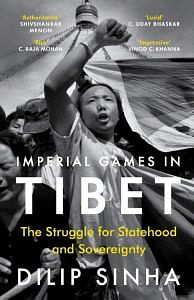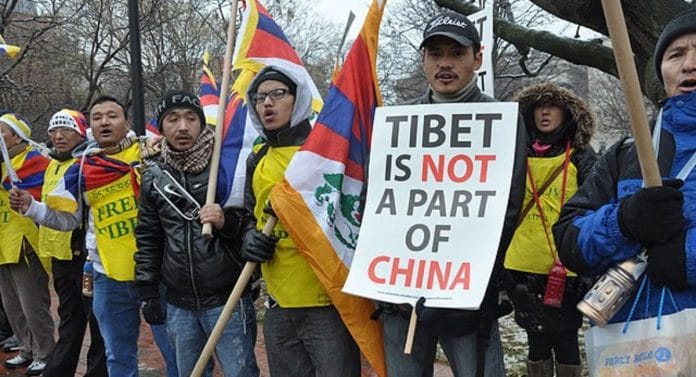In 1951, the UN General Assembly adopted a resolution declaring that China had engaged in aggression in Korea. Twenty years later, it voted to displace Taiwan in the UN, turning China overnight from an international pariah to a veto wielding permanent member of the Security Council. China has used this position to consolidate its hold over other UN bodies.
Between 2019 and 2021, Chinese nationals headed an unprecedented four UN specialized agencies. It has also refused to allow Taiwan to become a member of the UN, arguing that there is only one China and only one government can represent it. The rest of the world has accepted this, even though Korea is represented by two governments – as was Germany during the Cold War.
In violation of the UN Charter, China periodically threatens to invade Taiwan. So complete is Taiwan’s isolation that few countries have diplomatic relations with it, for fear of offending China, and it can only participate in international sports events as Chinese Taipei. China remains unreconciled to the loss of any territory ruled from or conquered by its former rulers – be it Mongolia, Taiwan or the islands of the East China and South China seas – and considers their reconquest a historical duty.
It is also rankled by the refusal of its traditional ‘tributary’ states in East and Southeast Asia to recognize its overlordship. In its early years, it became the self-declared leader of revolutionary movements in Asia and Africa, funding and arming their communist parties. In November 1949, President Liu Shaoqi told the Conference of Asian and Australasian Trade Unions that ‘[t]he path of the Chinese people’s victory … is the path which should be taken by the people of many colonial and semi-colonial nations who struggle for national independence and people’s democracy’.4 China promoted armed insurgencies in India, Myanmar, Malaysia, Indonesia, Vietnam, Cambodia and the Philippines.
Until 1952, China’s foreign policy mainly consisted of exporting the communist armed struggle. Then there was a moderate phase when it professed friendship with fellow developing countries in Asia and Africa; it participated in the Panchsheel Declaration with India in 1954 and the Bandung Conference of Afro-Asian Countries in April 1955. But the Great Leap Forward brought this conciliatory phase to an end.
Also read: ‘Dalai Lama will live on, Xi Jinping will die’—former Tibet PM on reincarnation geopolitics
China then targeted countries like Vietnam, Indonesia and Algeria, though it had little success winning friends or exporting revolution. In 1965, Indonesia experienced severe backlash against the communists and a subsequent right-wing military coup. But China continued to supply arms to the Burmese Communist Party and the Khmer Rouge in Cambodia, and it has stubbornly refused to publicly renounce its policy of promoting ‘People’s Wars’ in other countries.
Fearing China-supported communist parties, five countries in Southeast Asia – Indonesia, the Philippines, Malaysia, Singapore and Thailand – formed the Association of Southeast Asian Nations (ASEAN) in 1967. China condemned it as an American creation.
Despite vociferous criticism of Communist China, the US, then under President Richard Nixon, reached out in 1971 as part of the American effort to encircle the Soviet Union. After World War II, China had relied on its communist brother, the Soviet Union, to build its military strength but relations weakened after Stalin and finally ruptured around 1960 when the Soviet Union terminated its nuclear assistance.
When the Soviet Union signed the Partial Test Ban Treaty with the United States in 1963, China launched a vicious campaign of calumny against Soviet Premier Nikita Khrushchev, accusing him of betraying communism, and tested the nuclear bomb the following year. In 1969, China and the Soviet Union clashed violently across their borders. Nixon took advantage of this split to isolate the Soviet Union and weaken China’s support for North Vietnam. China quickly used this rapprochement to promote its economic development and international standing.
China’s irredentism has led to armed conflicts with Korea, India, Russia and Vietnam, as well as confrontation with all its neighbours. In 1974, it seized the Paracel Islands (called Xisha by China) in the South China Sea from South Vietnam, which appealed to the US for help. But the US had started its withdrawal from Vietnam after the Paris Peace Accords the previous year and was unwilling to let anything undermine its efforts to improve relations with China.
In 1978, Vietnam signed a treaty of friendship and cooperation with the Soviet Union, which incensed China. It invaded Vietnam, claiming the act was a ‘self-defensive counterattack’. China also used terms like ‘punishment’ and ‘teaching a lesson’ for its action – a throwback to the days when its emperor would chastise vassal states for impudence.
In 1992, China passed a law claiming sovereignty over nearly all of the South China Sea, including the Spratly Islands (called Nansha in Chinese). The Paracel Islands are now entirely under its control, while parts of the Spratly Islands are occupied by Vietnam, Malaysia, the Philippines and Taiwan. Both island groups are disputed, but China refuses to accept international mediation or the application of the UN Convention on the Law of the Seas (UNCLOS) to resolve the issues peacefully under international law.
With the turn of the twenty-first century, China’s military strength was augmented by its economic power, multiplying its power base manifold. In 2013, it launched an economic programme to transform China into a transport hub and promote foreign trade with the construction of large infrastructure projects abroad through Chinese companies.
Initially known as the Silk Road Economic Belt, before being renamed the One Belt One Road scheme and finally the Belt and Road Initiative, the projects have done little to boost the economic development of the recipient countries, with many of them falling into debt traps. China has instituted the usurious practice of seizing their assets to recover its loans. In 2017, it took the port of Humbantota from Sri Lanka on a ninetynine-year lease for non payment of dues. Ironically, Britain’s lease on Hong Kong in 1898 was for the same term.
Also Read: How Nepal ‘evolved as a sullen neighbour when it should be the friendliest of all’
Silent Suffering
Tibet has little chance of getting help from the United Nations against its powerful occupier. The passive resistance of its people has earned universal sympathy and admiration but their claim to be a sovereign state under foreign occupation has been clouded by their leaders’ muddled arguments and drowned out by China’s vociferous bullying.
The Tibetan people have defied China’s military by clinging to their faith and endured their misfortune with stoic resilience. China’s repression of its own Han Chinese people leaves no scope for minorities like the Tibetans to enjoy any political or human rights. Beijing has also targeted Tibet’s religious institutions in an attempt to break the spirit and solidarity of its people. According to Chinese President Xi Jinping, even Tibetan Buddhism ‘should be guided in adapting to the socialist order and should be developed in the Chinese context’.
For Tibetans, fleeing the country is the only recourse. There are about 150,000 Tibetans living in exile, mostly in India, where the Dalai Lama also lives. The Tibetans in exile have established the Central Tibetan Administration, which is based in Dharamsala, Himachal Pradesh, to manage their affairs and relations with other countries. It is headed by a president directly elected by the Tibetans in exile, a parliament and an executive council (kashag), although no country recognizes it as a government-in-exile.
China has supplanted the former Soviet Union as the main threat to western supremacy – one much more profound than Russia ever was. While there is talk of the return of the Cold War of the 1950s – in which the West was pitted against the communist alliance of the Soviet Union and China – China continues to successfully play both sides, maintaining close economic and military ties with Russia while providing enough inducements to keep the West enticed.
China is the current winner of the imperial game, and there is no end in sight to its occupation of Tibet. Even though the Dalai Lama has divested himself of all temporal powers, handing them to the Central Tibetan Administration, the de facto government- inexile, there will inevitably be a void after him.
The long interregnum of the rebirth, selection and growing up of the new Dalai Lama is bound to be embroiled in controversy. While the lamas in exile will select the child according to the directions left behind by the Dalai Lama, China is unlikely to recognize him and will certainly appoint its own. There is little prospect of a smooth reincarnation, given the continuing wrangles over other senior lamas like the Panchen Lama and the Karmapa Lama.
The role of the government-in-exile will become critical, as will the attitude of other countries, particularly India and the US. The Tibetan political leadership will have to become more assertive, and India and the US less ambivalent about their support towards it. That is the only ray of hope for the Tibetan people in their long struggle for statehood and sovereignty.
 This excerpt from Dilip Sinha’s book ‘Imperial Games in Tibet: The Struggle for Statehood and Sovereignty’ has been published with permission from Pan Macmillan India.
This excerpt from Dilip Sinha’s book ‘Imperial Games in Tibet: The Struggle for Statehood and Sovereignty’ has been published with permission from Pan Macmillan India.






